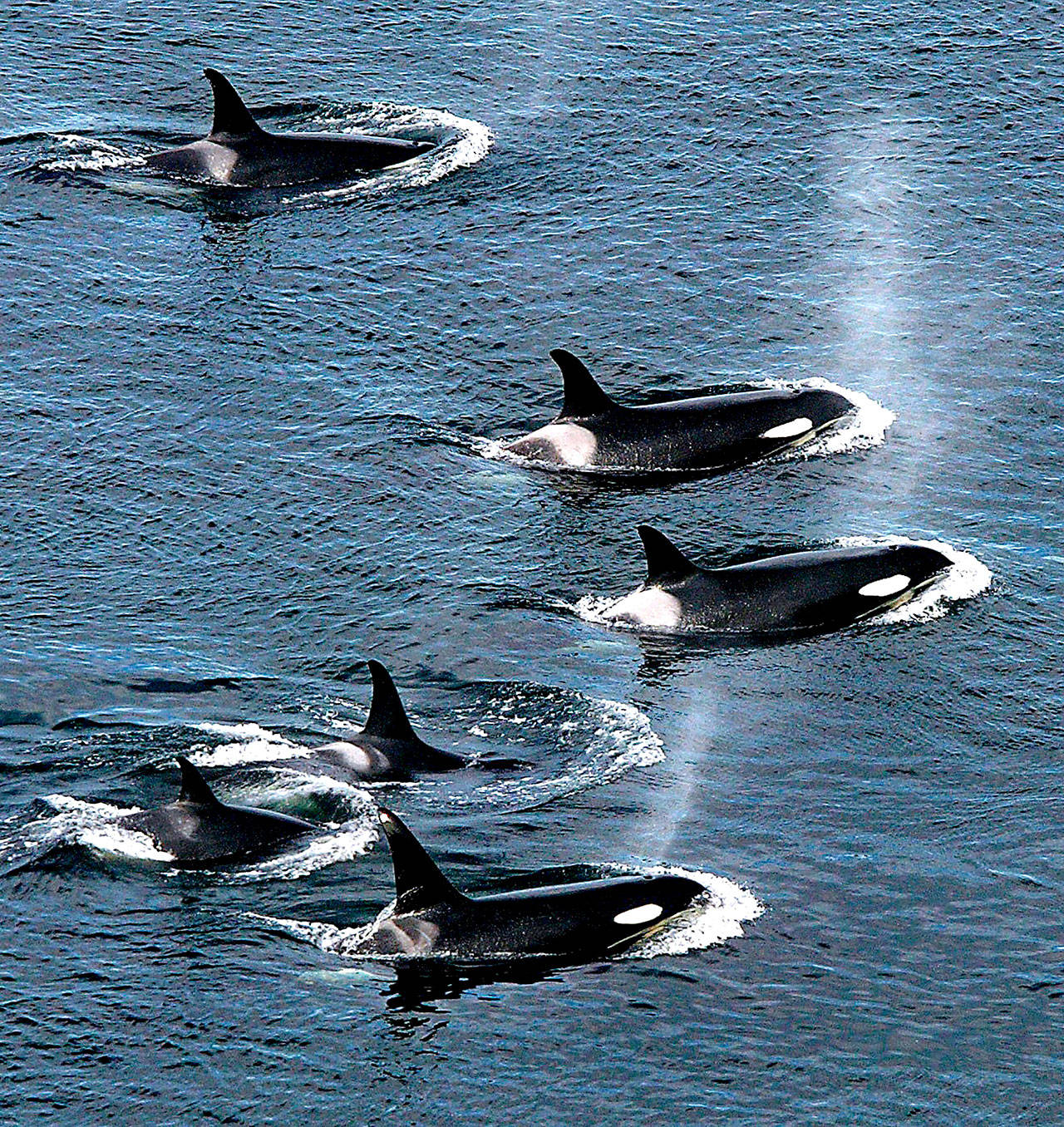CENTRAL PUGET SOUND — J and K pod orcas visited local waters Thursday, including the newest baby born to the endangered southern residents.
The littlest J pod whale wagged her tiny pectoral fins as her mother playfully pushed her through the waves near the south end of Whidbey Island.
The whales spyhopped and leapt, looking playful and sleek, as the last rays of summer sun shone on their dorsal fins. Their puff and blow was primal, powerful, a sound like something from the beginning of time.
It was a rare visit this year as the orcas have been spending most of their time on the outer coast of Washington, where the federal government has proposed expanding the whales’ critical habitat.
Brad Hanson, researcher for the National Oceanic and Atmospheric Administration’s Northwest Fisheries Science Center in Seattle, worked with a crew through the afternoon aboard a NOAA research boat, gathering fecal samples with a long-handled net.
The material was pink with salmon and thick and fatty: the sign of a good meal, perhaps. These samples are of infinite value to scientists, who can deduce from them what the whales were eating and even, through DNA analysis, where the fish came from.
“It has opened a whole new door,” said Hanson, as he wrangled the net to scoop up another bit of viscous whale poo.
Maya Sears and Rachael Cumberland, research assistants on the crew, worked quickly to gather the samples from the net, coax them into plastic vials and stow them in a cooler. They would hustle the samples back to Friday Harbor Labs later the same day, to freeze for later analysis. The agency has about 1,000 such samples by now, compiled over the years, many by this team.
Great wheels of gulls turned over the whales, perhaps hoping for fish scraps. Hanson vied with them for the fecal samples, which smelled pungently of fish.
“That’s my sample!” he said to a gull swooping to the water’s surface.
The orca field season this year has been challenging for researchers, with the orcas spending much of their time on the coast. The southern residents surprised everyone by turning up in Central Puget Sound this week.
Normally, they are in the San Juan Islands this time of year.
Only 73 orcas remain in the southern resident pods, the lowest number since they were captured for aquariums in the 1960s and ’70s. The secrets unlocked in the whales’ scat could reveal solutions for their survival.
The rumble of a train down the shore, the ferries slinking back and forth and the sight of the Seattle skyline in the distance made the whales’ presence right here, amid millions of us, all the sweeter.
Their black dorsals cut the blue water and the sound of the orcas’ blows came from every direction as they hunted fish, horsed around and played.
With excellent vision (they can even see backward, to their tail) and a strong tactile sense, they seemed to take huge pleasure spyhopping for a look around and hurling themselves through the air, landing with a splash.
Even Hanson seemed transfixed, even as he worked, by the grace and power of the animals that have fascinated him since he, as a boy, first saw Namu the killer whale on the Seattle waterfront.
“It never gets old,” Hanson said, and reached out for another sample.



